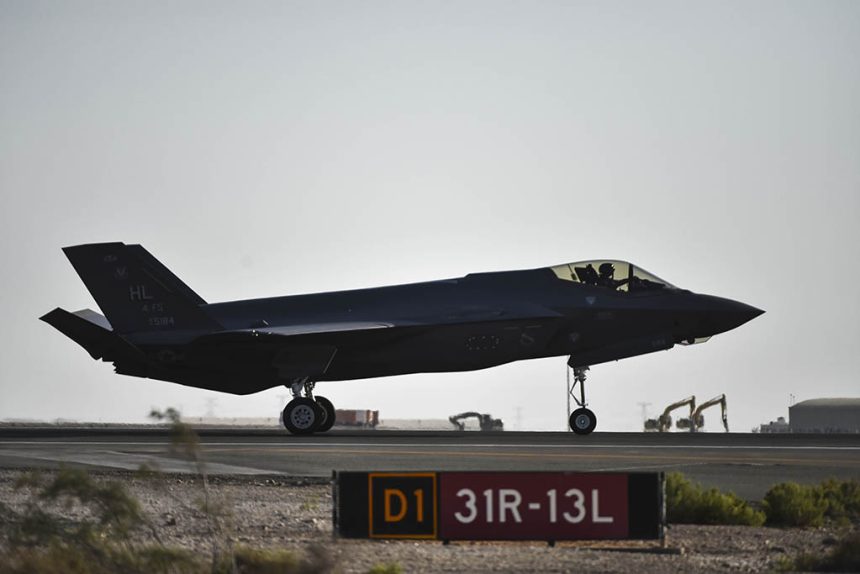F-35A Lightning IIs from active duty 388th and reserve 419th Fighter Wings at Hill Air Force Base, Utah, have arrived at Al Dhafra.
Four Lightning II belonging to the active duty 388th and reserve 419th Fighter Wings at Hill Air Force Base, Utah, have just arrived at Al Dhafra Air Base, UAE, for the F-35A’s first deployment to the Middle East.
Flying as “Trend 41” and supported by three tankers (“Gold 91-93”), the F-35s made a stopover in Moron Air Base, Spain. Additional F-35s are on their way along the same route. Four F-35A landed at Moron on Apr. 15: AF 15-5180, -5181, -5163, -5176). Based on reports, at least 12 F-35A Lightning II should deploy to the UAE.
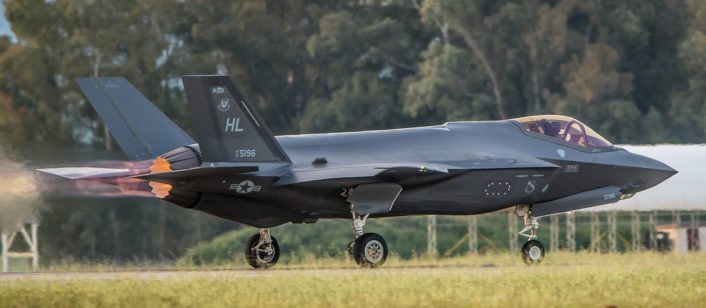
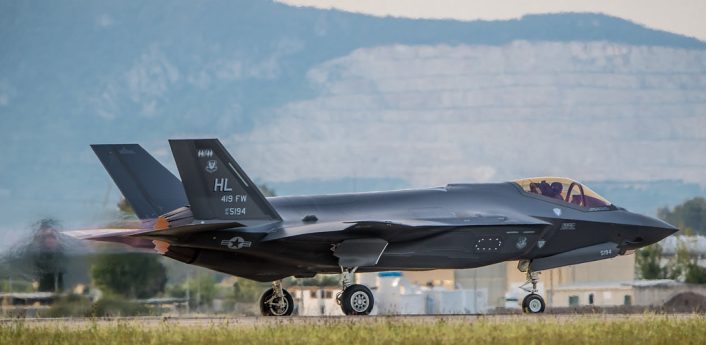
“We are adding a cutting edge weapons system to our arsenal that significantly enhances the capability of the coalition,” said Lt. Gen. Joseph T. Guastella, commander of U.S. Air Forces Central Command in a public release. “The sensor fusion and survivability this aircraft provides to the joint force will enhance security and stability across the theater and deter aggressors.”
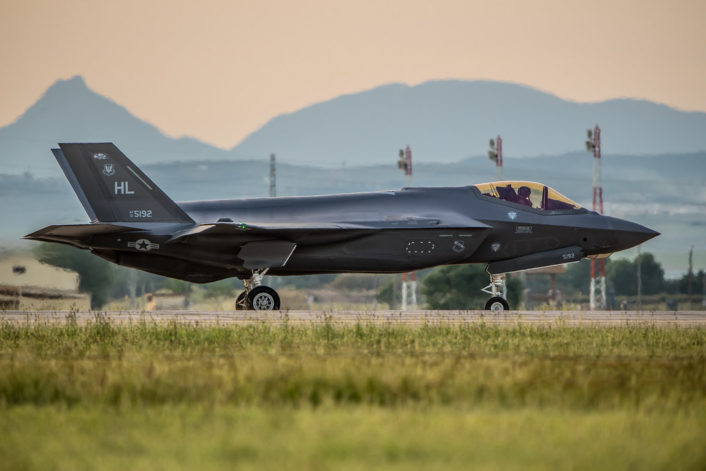
It’s the first deployment to the U.S. Air Force Central Command area of responsibility for the USAF F-35A aircraft, that has previously deployed to RAF Lakenheath in the UK in April 2017 as well as Kadena, Japan, in the U.S. Pacific Command AOR in November 2017.
The AFCENT release provides little additional detail about the role the aircraft is about to play in theater: “The F-35A is designed with the entire battlespace in mind, and is intended to fuse, integrate and share data with other battlefield assets. It has one of the most powerful and comprehensive integrated sensor packages. It improves lethality, survivability and adaptability against emerging threats in order to maintain air superiority.”
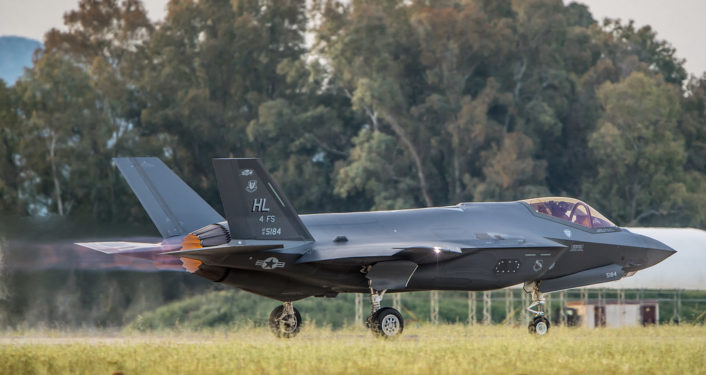
It’s quite likely that the F-35 will be tasked with missions similar to those carried out by the F-22 Raptors that have been flying over Iraq and Syria as “electronic warfare enabled sensor-rich multi-role aircraft” escorting strike packages into and out of the target area while gathering details about the enemy systems and spreading intelligence to other “networked” assets supporting the mission to improve the overall situational awareness.
The F-35 can leverage its Low-Observable characteristics to operate, if needed, in contested airspace and provide increased situational awareness for other coalition aircraft while simultaneously delivering precision air-to-ground weapons. As done by the F-22s, the F-35 can use its advanced onboard sensors to collect valuable details about the enemy Order of Battle, then share the “picture” with attack planes, command and control assets, as well as Airborne Early Warning aircraft, while escorting other manned or unmanned aircraft towards the targets. Indeed, the Lightning II is equipped with both the MADL [Multifunction Advanced Data Link] and Link 16, with the latter used only as a “backdoor” that allows the F-35 to communicate with legacy aircraft and perform the function of “enhancers” of previous generation platforms.
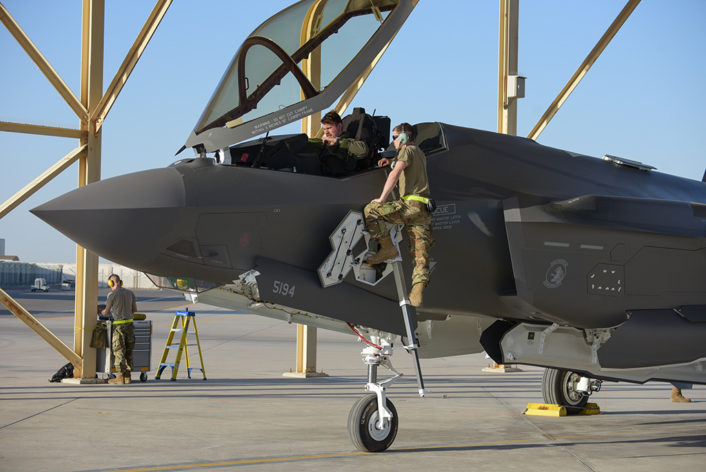
Another Lightning II deployment is underway: F-35B Lightning II aircraft, attached to the F-35B detachment of the “Flying Tigers” of Marine Medium Tiltrotor Squadron (VMM) 262 (Reinforced), are currently in the Indo-Pacific region deployed aboard the amphibious assault ship USS Wasp (LHD 1). Wasp, flagship of Wasp Amphibious Ready Group, with embarked 31st Marine Expeditionary Unit (MEU), is operating in the region “to enhance interoperability with partners and serve as a ready-response force for any type of contingency.”
Moreover, it’s not the first time an F-35 of any variant operates in CENTCOM AOR. Last year, on Sept. 27, 2018, U.S. Marine Corps F-35B jets made their combat debut. U.S. Marine Fighter Attack Squadron 211, the “Wake Island Avengers”, of the 13th Marine Expeditionary Unit, used their F-35B Lighting II Joint Strike Fighters to hit insurgent targets in Afghanistan’s Kandahar Province launching from U.S. Navy Wasp-class amphibious assault ship USS Essex (LHD-2) on station in the Persian Gulf. The aircraft used in the strike were loaded with GBU-32 1000-lb JDAM (Joint Direct Attack Munitions) but were also equipped with the externally mounted GAU-22 25mm gun pod in addition to the weapons in the internal bays. And sported the radar reflectors too. At least two aircraft, modex CF-00 and CF-01, made a stopover in Kandahar Air Field after the air strike, before returning to the aircraft carrier.

